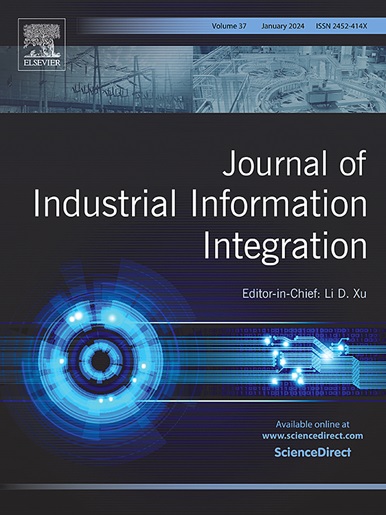基于定向梯度描述子直方图结合深度学习的实际实现——基于鲁棒故障预测的光伏电站智能监测
IF 10.4
1区 计算机科学
Q1 COMPUTER SCIENCE, INTERDISCIPLINARY APPLICATIONS
引用次数: 0
摘要
随着光伏系统监测的日益复杂,精确的故障检测和能量损失预测显得尤为重要。本文提出了一种基于深度学习的框架,该框架集成了多种先进技术,可以准确地检测、定位和预测光伏板故障。基于AlexNet架构的预训练卷积神经网络(CNN)处理热成像数据以精确提取故障。这有助于对故障进行分类,有助于改进光伏系统管理的决策。本文章由计算机程序翻译,如有差异,请以英文原文为准。

Practical implementation based on histogram of oriented gradient descriptor combined with deep learning: Towards intelligent monitoring of a photovoltaic power plant with robust faults predictions
The increasing complexity of photovoltaic (PV) system monitoring underscores the importance of precise fault detection and energy loss prediction. This paper proposes a deep learning-based framework that integrates multiple advanced techniques to accurately detect, localize, and predict faults in PV panels. A pre-trained Convolutional Neural Network (CNN), based on the AlexNet architecture, processes thermal imaging data for precise fault extraction. This facilitates the classification of faults, contributing to improved decision-making in PV system management.
To further enhance real-time monitoring, the framework integrates the Histogram of Oriented Gradients (HoG) descriptor with Support Vector Machine (SVM) models, enabling efficient detection and localization of hotspots across the panels. Additionally, the system leverages Long Short-Term Memory (LSTM) networks combined with fuzzy logic to predict panel performance degradation and quantify energy losses caused by detected faults. The learning process relies on the Long-Term Recurrent Convolutional Network (LRCN) to accurately forecast defects by analyzing power efficiency loss rates.
Experimental results confirm the effectiveness and reliability of the proposed framework. Achieving an accuracy of 95.45%, with a true positive rate of 91.67% and a true negative rate of 100%, the system demonstrates robust fault detection capabilities. These results highlight the framework’s potential to mitigate power losses, ensuring optimal operation of PV systems. This intelligent solution offers a significant advancement in PV system maintenance and monitoring, providing a scalable approach for real-world applications.
求助全文
通过发布文献求助,成功后即可免费获取论文全文。
去求助
来源期刊

Journal of Industrial Information Integration
Decision Sciences-Information Systems and Management
CiteScore
22.30
自引率
13.40%
发文量
100
期刊介绍:
The Journal of Industrial Information Integration focuses on the industry's transition towards industrial integration and informatization, covering not only hardware and software but also information integration. It serves as a platform for promoting advances in industrial information integration, addressing challenges, issues, and solutions in an interdisciplinary forum for researchers, practitioners, and policy makers.
The Journal of Industrial Information Integration welcomes papers on foundational, technical, and practical aspects of industrial information integration, emphasizing the complex and cross-disciplinary topics that arise in industrial integration. Techniques from mathematical science, computer science, computer engineering, electrical and electronic engineering, manufacturing engineering, and engineering management are crucial in this context.
 求助内容:
求助内容: 应助结果提醒方式:
应助结果提醒方式:


